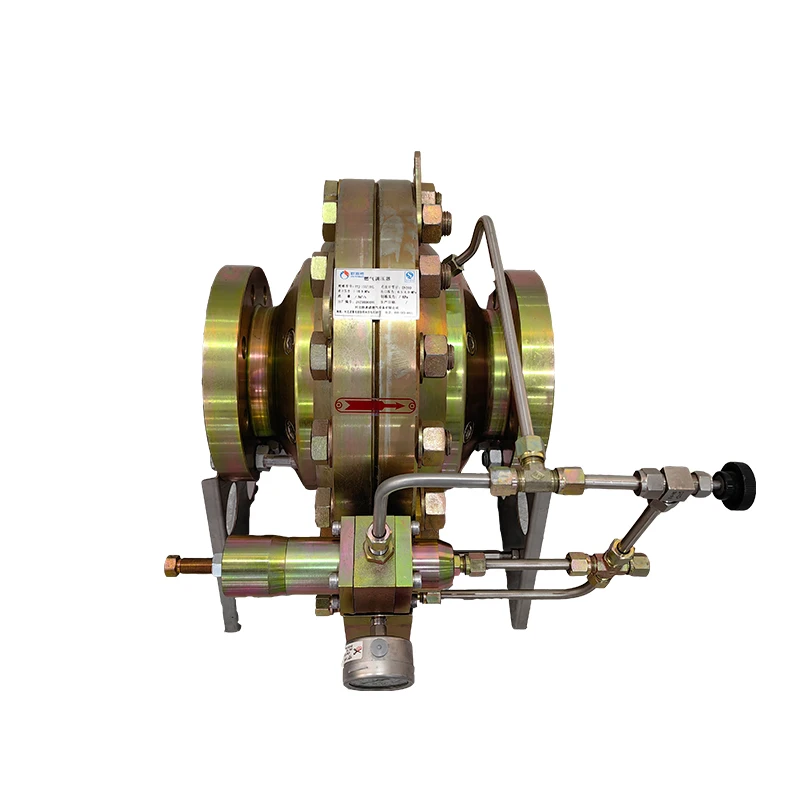
Dec . 01, 2024 16:43
Back to list
Exploring the Importance of Pressure Relief Devices in Industrial Applications
Understanding Pressure Reducing Valves Their Importance and Functionality
Pressure reducing valves (PRVs) are essential components in various industrial and domestic applications, playing a crucial role in managing and controlling fluid pressure. As the name suggests, these valves are designed to reduce the pressure of fluids, providing a more stable and manageable output. This article will explore the importance, functionality, key components, and applications of pressure reducing valves.
Importance of Pressure Reducing Valves
PRVs are vital in numerous systems where pressure regulation is necessary to ensure the safety and efficiency of operations. In many scenarios, high pressure can lead to catastrophic failures, equipment damage, or hazardous situations. For instance, in water supply systems, a PRV can prevent excessive pressure from causing pipe bursts or leaks. In industrial applications, these valves help maintain optimal operating conditions for machinery, thereby enhancing productivity and reducing maintenance costs.
How Pressure Reducing Valves Work
The primary function of a pressure reducing valve is to maintain a set output pressure regardless of fluctuations in the inlet pressure. When fluid enters the PRV, a diaphragm or a piston responds to the pressure. As the fluid pressure builds up, it pushes against the diaphragm, which is linked to an adjustable spring. This connection allows for calibration of the desired outlet pressure.
When the outlet pressure exceeds the set limit, the diaphragm moves to throttle the flow of fluid, thus decreasing the pressure downstream. Conversely, if the outlet pressure falls below the desired level, the spring pushes the diaphragm back, allowing more fluid to pass through and restore the pressure. This self-regulating mechanism ensures a consistent and stable pressure output, which is crucial for the reliable operation of various systems.
Key Components of Pressure Reducing Valves
1. Inlet and Outlet Ports These are the points where fluid enters and exits the valve. Proper sizing is crucial for efficient operation.
.
3. Spring An adjustable spring determines the set output pressure. Operators can modify the tension in the spring to achieve desired pressure levels.
مخفض الضغط

4. Adjustment Screw This is typically found on the top of the valve, allowing users to change the spring tension easily and set the desired output pressure.
5. Body The valve body houses all internal components and is usually made from durable materials to withstand high pressures and harsh environments.
Applications of Pressure Reducing Valves
Pressure reducing valves find application across a wide range of industries
- Water Supply Systems PRVs help control water distribution in municipal systems to ensure consistent pressure and prevent damage to pipes and infrastructure.
- Heating and Cooling Systems In HVAC systems, PRVs maintain optimal pressure levels to ensure efficient thermal performance.
- Process Industries Industries such as chemicals and pharmaceuticals use PRVs to control pressures in reactors and pipelines, ensuring safe and efficient operations.
- Automotive Systems In vehicles, PRVs manage fluid pressures in braking systems and fuel delivery, enhancing safety and performance.
Conclusion
Pressure reducing valves are critical for ensuring safety and efficiency in various applications. By controlling outlet pressure and preventing overload situations, these valves protect equipment and optimize operational performance. Understanding their functionality, key components, and diverse applications is essential for technicians, engineers, and anyone involved in systems where fluid dynamics play a critical role. With the proper use of PRVs, industries can significantly enhance their productivity while ensuring safety and reliability in their operations.
Next:
Latest news
-
Safety Valve Spring-Loaded Design Overpressure ProtectionNewsJul.25,2025
-
Precision Voltage Regulator AC5 Accuracy Grade PerformanceNewsJul.25,2025
-
Natural Gas Pressure Regulating Skid Industrial Pipeline ApplicationsNewsJul.25,2025
-
Natural Gas Filter Stainless Steel Mesh Element DesignNewsJul.25,2025
-
Gas Pressure Regulator Valve Direct-Acting Spring-Loaded DesignNewsJul.25,2025
-
Decompression Equipment Multi-Stage Heat Exchange System DesignNewsJul.25,2025

